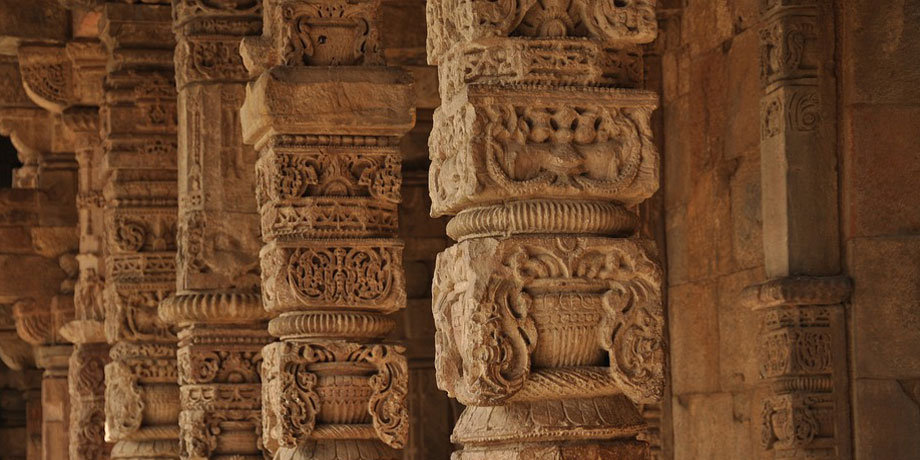
Indian temple art is renowned for its intricate carvings and sculptures, but one aspect that often goes unnoticed is the use of sacred geometry. Sacred geometry is the use of mathematical principles in the design of religious structures and art. In Indian temple art, this can be seen in the layout of the temple, the proportions of the idols, and the intricate carvings on the walls.
One of the most obvious examples of sacred geometry in Indian temple art is the mandala. A mandala is a geometric design that represents the universe. It is often used in the floor plans of temples and can be seen in the layout of the temple's courtyard and inner sanctum. The mandala is usually symmetrical, with the main deity in the center, surrounded by smaller deities and symbols. This layout is believed to reflect the cosmic order and balance in the universe.
Another example of sacred geometry in Indian temple art is the use of the golden ratio. The golden ratio, also known as the divine proportion, is a mathematical ratio that is believed to be aesthetically pleasing. It can be found in the proportions of the idols and statues in temples. For example, the height of the idol's face is usually in the ratio of 1:1.618 to the width of the face. This proportion is also found in the proportions of the temple's walls and pillars.
The intricate carvings and sculptures on the walls of Indian temples are also examples of sacred geometry. These carvings are not just decorative but also have a deeper meaning. They often depict scenes from Hindu mythology and religious stories. The carvings are usually symmetrical and use repeating patterns and shapes, such as the lotus flower, which is a symbol of creation and the unfolding of the universe.
In addition to the above examples, Sacred geometry also used in the temple's architecture, The temples usually built in such a way that it receives the first rays of the sun on certain auspicious days.
In conclusion, sacred geometry plays a significant role in Indian temple art. It is not just a decorative element but also holds deeper spiritual and philosophical meanings. From the layout of the temple to the proportions of the idols and the intricate carvings, sacred geometry can be found everywhere in Indian temple art.



Leave a Comment